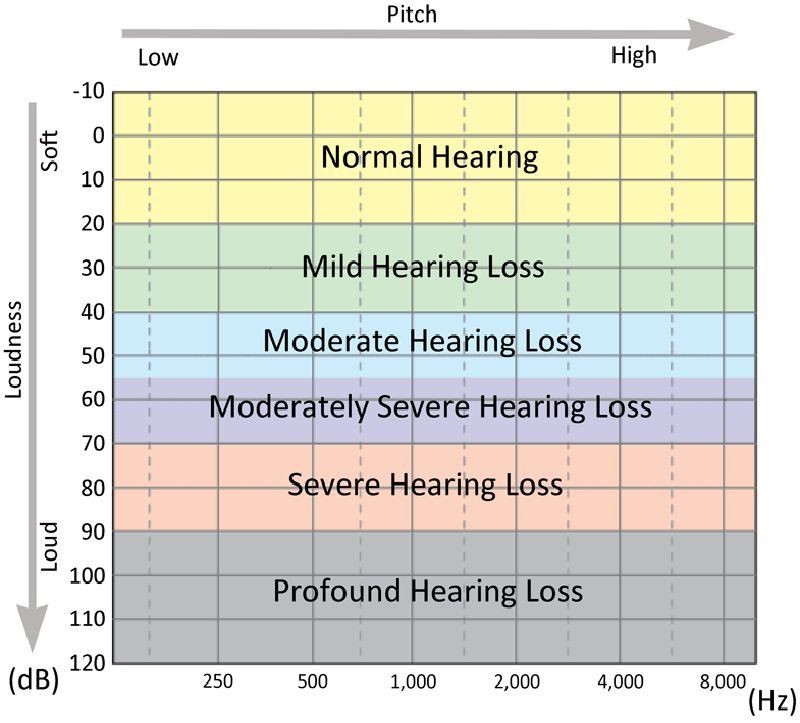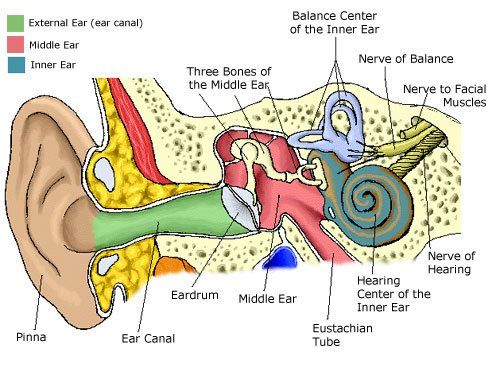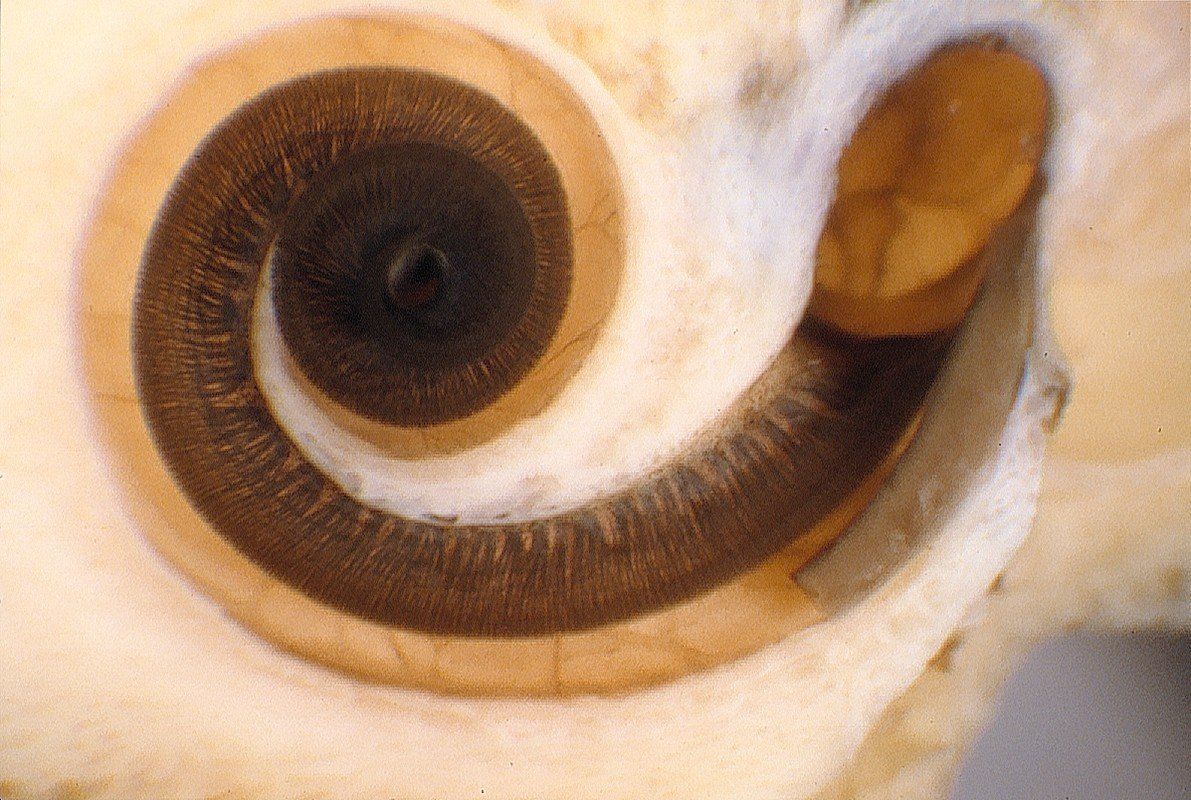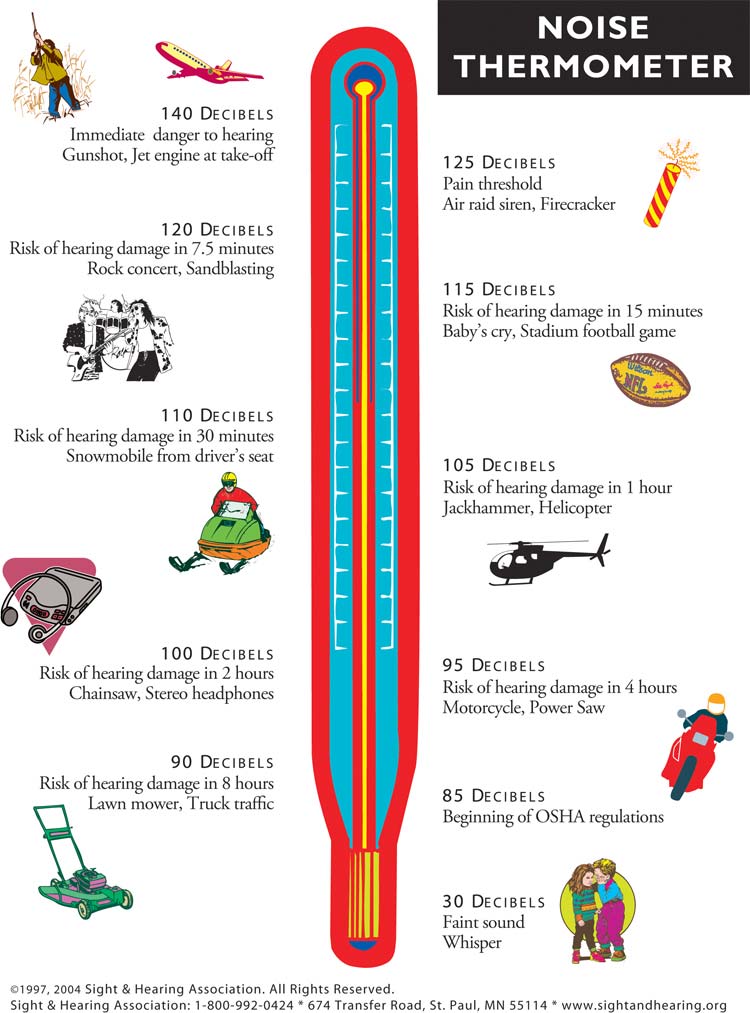Hearing Loss
Hearing loss is described by degree or severity and type of loss. When your hearing is tested, the softest sound that you can hear is recorded. This is called a threshold. Thresholds are plotted on a graph called an audiogram and can vary by pitch. These thresholds determine the degree of hearing loss. Responses range from 0-120 dB HL. Normal hearing thresholds are up to 20 dB HL. Hearing loss can be categorized as mild, moderate, severe, or profound and the degree can vary by pitch.

Hearing loss is also described by the type of hearing loss. The cause of your hearing loss can determine the type or location of the loss.
Sensorineural Hearing Loss is described as a change in the anatomy of the inner ear (cochlea) or the hearing nerve. The inner ear contains small cilia called hair cells that can be damaged due to heredity or genetic types of hearing loss, noise exposure, some medications, and some viruses. These hair cells cannot be repaired and they do not grow back once damaged or broken. Changes in health and number of cells cause decreased volume and decreased clarity of speech. For many, this type of hearing loss occurs gradually over time. It is this gradual change that makes us less aware of the hearing loss. Often, family members or friends will mention the need for a hearing test because they find themselves speaking louder or repeating themselves to you. You may think that other people sound like they are mumbling or that they speak too softly or too quickly. You may find that the volume of the television is louder than family members would like. This type of hearing loss is not surgically treatable but often responds well to amplification with hearing instruments. If word recognition ability is significantly impaired, involvement of the hearing nerve (VIIIth nerve) is suspected. This used to be referred to as “nerve loss” and often it was not recommended for treatment. With the improvement in hearing aid technology, this type of loss can be treated with amplification and sometimes with additional accessories to provide the most benefit.

Conductive hearing loss is caused by a problem with the outer or middle ear. In this type of hearing loss, the inner ear is healthy. Cerumen impaction, tympanic membrane perforation, middle ear effusion (fluid in the middle ear), otosclerosis (fixation of the bones in the middle ear), ossicular chain discontinuity, and some congenital anomalies such as atresia (lack of ear canal) can cause this type of hearing loss. Some conditions that cause conductive hearing loss are medically or surgically treatable. Others are not and patients typically do well with amplification.
Mixed hearing loss is a combination of sensorineural and conductive hearing loss. This can happen when there is an existing sensorineural hearing loss with an additional conductive component, such as fluid or wax build up. Mixed hearing loss can also be caused by other conditions.
How Hearing Works
Hearing is one of the 5 senses. It is a complicated process wherein the ear collects sound and funnels it through the auditory system to the brain where it can be understood. The ability to hear is important to understanding the world around us.

The human ear is fully developed even before birth. Studies have shown infants responding to sound in utero.
The ear consists of 3 sections that lead up to the brain - the outer ear, middle ear, and inner ear.
The outer ear consists of the pinna (the part of the ear we see) and the external auditory meatus (ear canal). The pinna is made up of cartilage and soft tissues. It serves to collect sounds around us and direct those sounds into the ear canal. This can assist us with localization or direction of sound.
The middle ear consists of the tympanic membrane (eardrum), ossicles (bones of the middle ear), and middle ear space. The eardrum acts to boost the level of the sound vibrations that were collected by the pinna and transfer that energy to the malleus (the first bone of the middle ear). The 3 bones (malleus, incus, and stapes) act as a lever system to transfer sound from the eardrum to the membrane called the oval window in the inner ear.
The inner ear contains the sensory organ for hearing (cochlea) and balance (semicircular canals). The cochlea is the bony structure that is shaped like a snail and contains the Organ of Corti (the sensory organ within the inner ear) and fluids called endolymph and perilymph. The Organ of Corti contains hair cells. The hair cells are the nerve receptors for hearing.

Photo credit: Helge Rask-Andersen, MD, Uppsala University Hospital, Uppsala, Sweden, with permission
The mechanical energy produced by the movement of the bones in the middle ear transfers through the oval window and moves the cochlear fluids. This movement stimulates the tiny cells called hair cells. The rows of hair cells in the ear are arranged tonotopically, or by pitch, so that only some hair cells are stimulated when a sound is produced.

Photo credit: C.G. Wright, Department of Otolaryngology, UT Southwestern Medical Center, with permission
Signals from these hair cells are transformed into neural impulses, which are sent to the auditory processing centers of the brain. Neural impulses are understood by the brain as sound or speech.
Noise Exposure
Loud noise exposure on a continuous basis can cause permanent hearing loss. When we think of noise exposure, most people think about factory workers, airline employees, or others that work in loud environments. Other types of noise, such as recreational shooting, loud music (in person or under headphones), and power tools can cause hearing loss as well.
Loud noise causes damage to the hair cells that are stimulated by sound. When these hair cells are exposed to loud noise, a temporary threshold shift can occur. You may have experienced this as a plugged sensation after leaving a loud concert. Tinnitus, or ringing in the ear, can also occur.
With repeated exposure, a permanent threshold shift, or permanent hearing loss, occurs. This change in hearing cannot be reversed. The Occupational Safety and Health Administration (OSHA) created workplace safety standards that require hearing testing and ear protection for workers whose work environments exceed acceptable safety standards.


